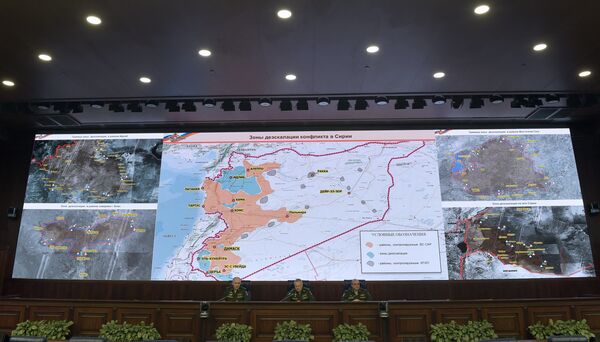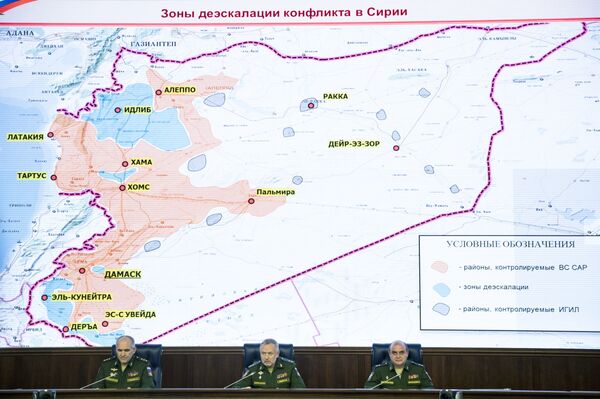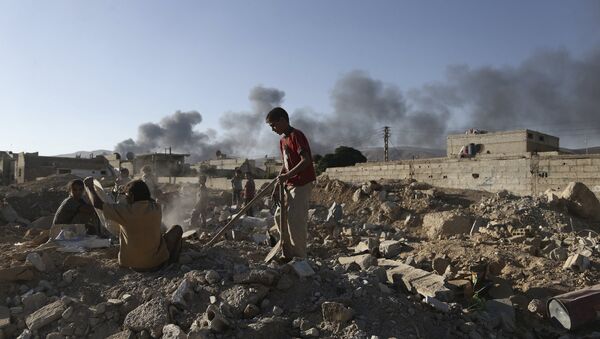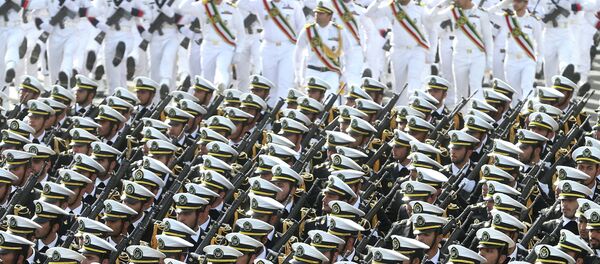An agreement to set up safe zones in Syria, also referred to as "de-escalation zones", came into effect at midnight on Saturday, local time, (22:00 GMT on May 5) but it will be at least another month before all the details are worked out and the safe areas are fully established, according to Russian officials.
The plan was agreed by Russia, Turkey, and Iran, who also act as the guarantors of the initiative and who authorized the memo creating the safe zones during Syria talks in Kazakhstan's capital, Astana.
The initiative is described as a temporary measure which will be enforced for the next six months with the possibility of extending it for another six.

The zones are located in the Idlib Governorate and parts of neighboring Latakia, Aleppo and Hama provinces; in the northern part of Homs province; in the Damascus neighborhood of Eastern Ghouta, and in parts of southern Deraa and Quneitra provinces bordering Jordan. No fighting between the government and opposition is allowed in the above areas.
Russian online newspaper Vzglyad has reviewed why particularly these four areas on the Syrian map have been chosen for a new peacekeeping format and what their military-strategic peculiarities are.
Idlib Governorate
Regarding the Idlib zone, it says, it is hard to predict what is going to be with it and who will be responsible for it in the foreseeable future.

"Even Turkey, which is bordering with the governorate, is not willing to set up a full control over the area, limiting itself to manipulations with the Turkey-backed groups," it says.
"The rest three zones are in fact jihadist enclaves encircled by government troops. They would have been doomed to be destructed sooner or later, if they did not stop resisting. In two of the zones, the militants either agreed to move to Idlib or surrendered under security guarantees," it further explains.
Eastern Ghouta
Eastern Ghouta, long suffering satellite of Damascus and practically independent municipality, has been a stronghold of various militant groups for more than four years. For the last year and a half, former urban dwelling quarters have been destroyed almost completely as the result of the street fighting. The territory under control of the militants has decreased almost tenfold. The open territories and riverbeds have come under control of the government troops. Separate groups of militants have been cut off from one another and encircled by the government units.
In such a situation, even staunch Daesh and al-Qaeda units, encircled in Eastern Ghouta, have begged for a "trip to Idlib", which they were provided with, the website says, much to the criticism even within the circles close to President Assad. And first of all, among the military, who wondered why the militants were allowed leaving for Idlib when they could have been destroyed.
"The creation of a de-escalation zone in Eastern Ghouta will allow diminishing dangers it poses to the central part of Damascus. Another matter that it is hard to imagine what will be the relationship between the government troops, civil authorities and staunch jihadist units remaining in the area," the website says.
According to some information, the relationship with the jihadists will be left to those so-called "moderate" rebels who are taking part in the peace talks in Astana and are present in Eastern Ghouta. There have been such precedents, it says.
The total population of Ghouta is almost 600,000 people, many of whom are regularly crossing the front line to come to work in Damascus. The territories which are still under the control of Daesh are not included into the de-escalation zone.
Northern part of Homs province
Relatively the same situation is to the north of the city of Homs, however religious and ethnic issues are much worse there. Small enclaves under the jihadists and "moderates" form a narrow strip to the north of Homs and block several large settlements populated by Alawites and Christians.

The situation there is particularly complicated, the website says, as it is not simply a front line as in Idlib or Aleppo, but a line of direct contact of adversarial religious parties to the conflict.
The continuation of the military operation in this region would have foreseeably resulted in large civilian losses. For example, there are up to 3,000 militants near the city of Ar-Rastan with the population of 100,000 people. The safe zone here will allow preventing further blockade of certain settlements of certain confessions.
Deraa and Quneitra provinces
The final geographic division of the four zones should be completed by May 22, which only underlines the complexity of the process. Five days after this date, a working group will be set up, which will deal with the practical issues of the division.




